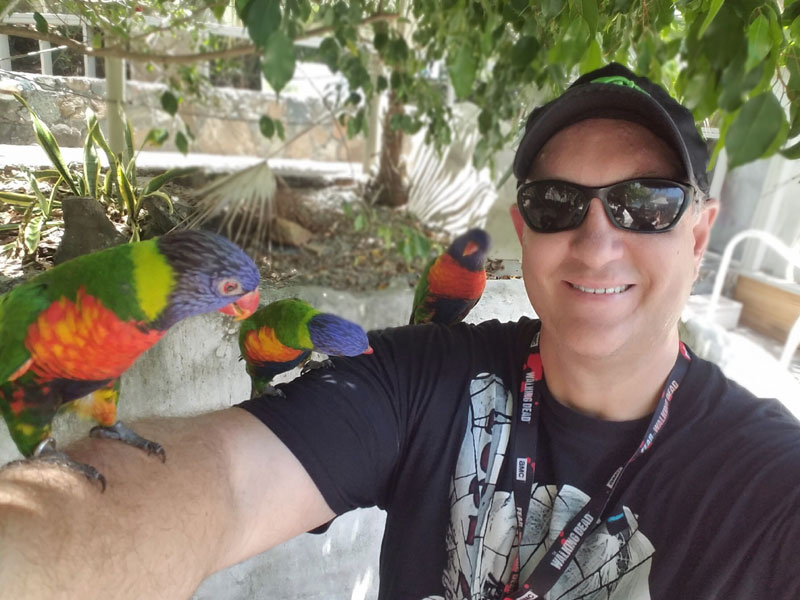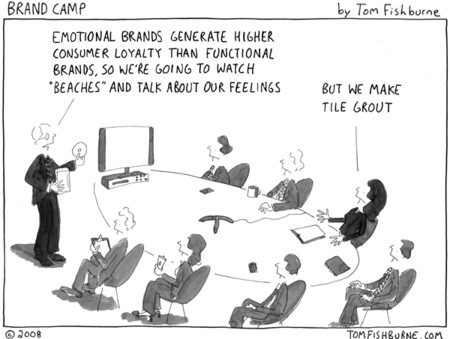
Casey Markee is a long-time educator, SEO expert, and the founder and president of Media Wyse, a San Diego-based online marketing firm. His experience working with food bloggers and in other niche industries has given him a unique perspective on content, SEO, and how to two work together to gain better visibility online.
1. Should anything be in place before embarking on a serious content marketing campaign?
Casey: Yes. Usually, before I work with any client I do a detailed site audit and a content inventory.
The site audit covers everything from page speed and overall UX, to how the site is optimized and presenting competitively to search engines. I’ll crawl the site fully and identify any technical weaknesses that may need to be addressed before any formal marketing campaigns begin.
Next, I’ll do a detailed content inventory and look closely at what has and hasn’t worked on the site in the past.
Among the questions I’ll ask may include: Is the existing content thin or generating little SEO momentum? Is there a duplicate content issue internally that is causing a cannibalization of resources? Is the existing content related to the niche of the site and targeted to the right audience? Is the content generating bottom line clicks, social signals and/or external links?
Once I have answers to the above in place then and only then do I discuss a future content marketing strategy with the client.
2. How is “storytelling” different than just writing blog posts?
Casey: There are over 2 million blog posts published each day. The vast majority of those posts are just words on paper detailing an approach, strategy, tactic or something else that pushes the brand forward. Most blog posts do not work to elicit a connection with the target audience.
In contrast, storytelling taps into the emotion of the reader and works to paint a picture into the mind of the reader that connects them viscerally with a brand and what that brand stands for. Storytelling takes a reader-first focus and works to present concepts, strategies, and tactics via a shared story that leaves the reader wanting more. The end goal of storytelling is usually the conversion of reader to long-term brand advocate.
3. Beyond sharing insight about a specific client or experience, what are some other ways the concept of storytelling can be implemented in marketing?
Casey: The end point of all storytelling is to win hearts and minds. In fact, for brands it’s no longer enough to sell a quality product or service: you have to communicate to users why you matter!
In a world of infinite choice, it’s not enough to sell a quality product or service, you need to communicate WHY you matter! #storytelling
— Casey Markee (@MediaWyse) September 7, 2016
Companies can do this in a variety ways; one of them is to use a “challenge plot” approach. This is when a brand or company takes a storytelling approach whereby they present themselves as an underdog overcoming a great challenge to bring value to the masses.
Probably the best example of type of storytelling approach in recent history is Dollar Shave Club. They asked a simple question, “Why pay more for shaving blades and supplies if you don’t need to?” Their combination of video storytelling and superior product resulted in them being purchased for $1 billion by Unilever in 2016.
Another example of brand storytelling is called the “transparency approach.” A great example of this is online clothing retailer Everlane. Their tagline sums up their storytelling approach to customers: “Modern Basics, Radical Transparency.”
Because they realize the fashion world can be ripe with human rights abuses and sweatshop factory horror stories, Everlane lives and breathes a mantra of “Know your Costs, Know your Factories, and Always Ask Why.” They link to their factories and seek to work with the very best in the world. That has translated into incredible brand loyalty for their customers who know that each item of clothing they buy communicates a “human-first story” that they can get behind.
4. I know you work with a lot of food bloggers. This isn’t your specific niche, but I’m sure it brings up lots of interesting stories. How can companies in niche industries hone in on what makes a good story?
Casey: Food blogging is an interesting niche. Not only is it super-competitive because there are millions of food blogs, but there are only so many ways you can make an apple pie. As such, getting bloggers to focus on a hook, unique twist, or storytelling focus that sets them apart is incredibly important.
In one case, I consulted with a blogger who was having trouble getting her dessert blog to stand out. But one of her strengths was with fondant and video. So we setup detailed FAQs and resources on her site focusing around that topic specifically, and then worked to help her push-out those stories on social media.
Regardless of niche, stories exist for everyone. Finding those stories just involves taking an inventory of your strengths and weaknesses and doing some simple competitive research.
In the end, storytelling is the glue that holds existing content and experiences together. And every site has both. They just have to find them.
5. So many clients are at a loss as to how to make their content interesting since they work in a “boring” industry. How can storytelling make companies create better content?
Casey: This reminds me of a great cartoon by Tom Fishburne on the topic of “Brand Camp.”
 This is a struggle. It’s hard to take things like “tile grout” and make it attractive but it can be done and companies do this all the time. For example, think about GEICO and the topic of car insurance. It doesn’t get much more boring niche-wise than insurance.
This is a struggle. It’s hard to take things like “tile grout” and make it attractive but it can be done and companies do this all the time. For example, think about GEICO and the topic of car insurance. It doesn’t get much more boring niche-wise than insurance.
But when GEICO was purchased by Berkshire-Hathaway in 1996, it was because Warren Buffett saw a lot of opportunity they just had to get the branding right… And the result was the GEICO gecko. That lizard with an adorable British accent travels the world telling stories about the brand, its customers, and the company’s offerings.
This leads to great content; the gecko even has its own Facebook page, which shares everything from recipes to gecko life lessons and Monday Motivation tips. This works together to reinforce brand storytelling.
6. What are some great examples of brands of different sizes implementing a great storytelling campaign?
Casey: A great example of brand storytelling that comes to mind is Flow. Flow isn’t as well known as brands like Nike or Coca-Cola, but is a company that makes honey-harvesting bee hives. Although the brands are as differentiated as can be, they both share a knack for storytelling in video especially.
Flow, based in Australia, exploded on the scene in 2015 when it launched an Indiegogo fundraising campaign to promote its revolutionary Flow Hive which allowed beekeepers to actually tap and bottle honey directly from the hive. Order the hive, add the bees, turn a crank and you could have honey.
Thanks to an incredible initial video that connected the viewer emotionally with the three-generation beekeeping Anderson family and their desire to open-up beekeeping to the masses, the Indiegogo campaign was an unparalleled success. Although the family was only looking for $70,000 in funding, they would eventually raise $13 million over the last 18 months.
How did they do it? Because they weaved a story around their Flow Hive presenting it as a non-cruel way to harvest honey that made it easier on the beekeeper and much easier on the bees. The Flow Hive as a result has caused a boom in beekeeping enthusiasm worldwide by making the process a little simpler for mass participation.
7. What should marketers be tracking when it comes to their SEO content campaigns?
Casey: One of the first things any marketer should be looking at with regard to content tracking is engagement metrics. A good starting point is Google Analytics.
Here is a small list of GA metrics I’d want to track with regard to SEO content campaigns:
- Average Time on Page – The higher the better here. I also want to compare content that is generating two minute visits to those that are six or higher. Why the difference?
- Average Pages per Session – Is the content converting visitors to check-out other offerings on the site? If not, why not?
- Bounce Rate – Are using visiting my content and then leaving immediately or are they reading the full piece and then clicking around the site?
- New vs Returning Visits – The goal with any content campaign is to encourage repeat traffic. Can I see trends depending on the type of content as to what is generating those repeat visits?
- Referral Traffic – Where is my traffic to the content coming from? Is it Social? Search? Affiliate? Email? What can I improve on here?
Besides GA engagement I want to also focus on social media metrics and brand visibility. For example:
- Total Social Shares – Is the content we are writing generating shares and recommendations from users? If not, why not?
- Platform Breakdown – Where are the social shares being generated? Do I notice any specific platforms that I may not be initially targeting that I can use for the future?
- Comments & Discussion – Is the content generating on-site or social profile conversations and comments? Are users engaging with use in a discussion of what is being shared?
- Follower Growth – Is the content increasing our social reach? Are we building increased audiences because they like to read and interact with that content?
- Brand Visibility – Are we generating mentions and thought leadership within our niche as a qualified resource that colleagues and customers can visit regularly?
Finally, and maybe most importantly, I want to see if the content is actually generating some links and helping with domain authority.
Links are still the currency of the Internet. If the content isn’t generating much in the way of new incoming links to the site (which will help boost domain authority and give the site a lift in the rankings) why is that not happening?
8. Do you think the term and concept of “storytelling” when it comes to marketing and search will ever get played out like “guest blogging” did?
 Casey: There’s always the possibility that any strategy can be played out in some extent, but storytelling has a little more insulation against that than most.
Casey: There’s always the possibility that any strategy can be played out in some extent, but storytelling has a little more insulation against that than most.
The reason being is that people tend to remember a good story. Stories that appeal and connect with a user or customer on an emotional level don’t have an expiration date. And once people tend to become emotionally invested in a brand, it takes a lot for them to abandon that brand (and that story) in the future.



